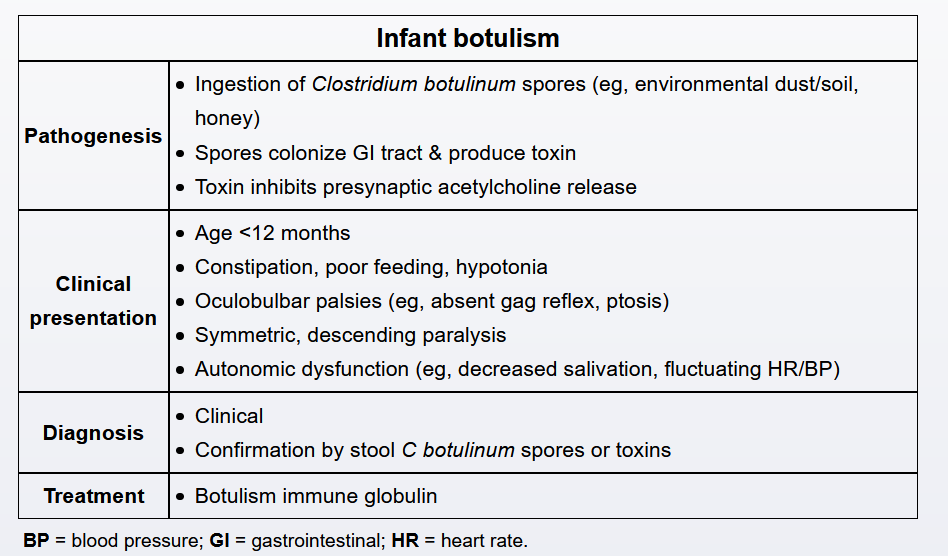Botulism

Infant botulism is a flaccid neuropathy that occurs in children age <1 following the ingestion of Clostridium botulinum spores. These spores are typically found in honey as well as environmental dust/soil, particularly in rural or farm areas where the soil is frequently disturbed. Although ingestion of the spores is unlikely to harm a healthy adult, infants have an immature digestive system that lacks protective enteric microbiota. Therefore, the spores are able to colonize the gastrointestinal tract and produce toxin in situ. This neurotoxin inhibits presynaptic acetylcholine release into the neuromuscular junction, causing dysfunction of the skeletal and smooth muscles.
Nonspecific early manifestations include constipation and poor feeding, as seen in this infant. Over time patients develop oculobulbar weakness, which may result in ptosis, impaired pupillary constriction, poor suck, and/or absent gag reflex. Muscle weakness can progress to descending paralysis and respiratory failure. Neurologic examination reveals symmetric hypotonia, diminished or absent deep tendon reflexes, and decreased strength.
Acetylcholine receptor antibodies in the neuromuscular junction are implicated in myasthenia gravis. Ptosis is a common presenting symptom; however, constipation is not associated, and a slow progression of fluctuating muscle weakness and fatigue is characteristic.
Intravenous botulism immune globulin (BIG-IV) is the treatment for infant botulism and should be administered as early as possible in the course of the illness to reduce the severity and duration of symptoms. It is given once the diagnosis is suspected and should not be delayed while awaiting confirmatory stool studies. Close monitoring of respiratory status is also required and is typically performed in an intensive care setting in case of any sudden deterioration. Supportive care includes laxatives for constipation and nasogastric feeds for poor suck. Infants often require hospitalization for a few months; however, a full recovery is expected with BIG-IV.